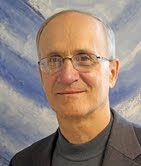January 23, 2018

Thomas Ryan, CSP
In late January the annual Week of Prayer for Christian Unity was observed around the world. Hopefully, there was at least one event in your town or city that brought Christians together to join their hearts and voices in prayer.
This Week of Prayer was originally initiated by Fr. Paul Wattson in 1908 as a Church Unity Octave. Fr. Paul founded the Society of the Atonement at Graymoor, Garrison, NY, with the mission of promoting Christian unity. He believed that an annual time set aside for prayer and seminars would advance the cause and deepen people’s understanding of the ecumenical movement.
A huge advance in deepening that understanding within the Catholic Church was the 1962-65 Second Vatican Council. One of the two reasons offered by Pope John XXIII in convoking it was the promotion of Christian unity. In the Council’s landmark Decree on Ecumenism, the world assembly of bishops gave priority of place to prayer: “Spiritual ecumenism should be regarded as the soul of the whole ecumenical movement.” They defined it as “change of heart and holiness of life” as well as “public and private prayer for the unity of Christians” (Decree on Ecumenism, 8).
Cardinal Walter Kasper, who directed for several years the work of the Vatican Secretariat for the Promotion of Christian Unity, said “The first place in spiritual ecumenism belongs to prayer, which joins Jesus’ own prayer on the eve of his death ‘that all may be one’.” (Jn 17:21)
But Cardinal Kasper then identified various other expressions of spiritual ecumenism as well: the shared reading and meditation of sacred scripture; exchanges between monasteries, communities and spirituality movements; visits to pilgrim sites and centers of spirituality.
He also saw as one of the most encouraging signs the creation of ecumenical monasteries like Taize (France), Grandchamp (Switzerland), and Bose (Italy); international lay movements and institutes of consecrated life like Focolare, the Community of Sant’Egidio, and the l’Arche Federation.
When John Paul II told the College of Cardinals in a state-of-the-church address “I pray every day for Christian unity,” I couldn’t help but wonder how many Christians could say as much. Imagine what a different Church it would be if many members in all the churches that make up the one Church of Christ could say the same.
It would make a difference because prayer’s first effect is in us. Our own hearts and minds would be shaped by our own prayer and become more sensitive to the opportunities we have to translate that prayer into practice. Prayer is and will always hold the first place in unity efforts because it is prayer that most changes our hearts, and it is our hearts that most need to be changed.
That said, as we noted, spiritual ecumenism encompasses more than simply prayer for unity. It is also an exchange of spiritual gifts—contemplative and charismatic ways of praying, lectio divina, devotional practices, the theology of icons, the tradition of spiritual direction, effective approaches to youth and young adults, the practice of annual retreats and monthly desert days, methods of singing, preaching, and sharing the faith.
After working for fourteen years at the Canadian Center for Ecumenism, I saw the need for more places where Christians from different traditions of practice could come together for days at a time to share faith and life with one another and engage in the exchange of spiritual gifts. So I became involved in the work of founding Unitas, an ecumenical center for spirituality co-sponsored by eight different denominations in Montreal. By the time I left there five years later in response to the Paulist community’s call to develop a North American Paulist Office for Ecumenical and Interfaith Relations in New York, there were 9000 participants annually in our programs and retreats. It met a need.
The approach we took there was one of grass roots spiritual ecumenism. The time spent in faith sharing and prayer together, the spiritual gifts exchanged, transformed peoples’ perceptions of one another and enriched their lives in concrete and lasting ways. Here was a way of engaging in the work for Christian unity that moved on the level of church members and had a direct, positive impact on their lives and their subsequent witness and prayer.
Spiritual ecumenism must seek out and serve life. It must be concerned with everyday human experiences as well as with the great questions of justice and peace and the preservation of creation. Through the prayer, sharing, and ministerial engagement our hearts are turned more fully toward Christ, and the closer we come to him, the more we discover ourselves in unity. And in the exchange of gifts, what is lacking in each of our traditions finds its needed complement.
In what form of spiritual ecumenism might it be possible for you to engage in the year ahead?
Fr. Tom Ryan, CSP, directs the Paulist North American Office for Ecumenical and Interfaith Relations in Boston, MA
